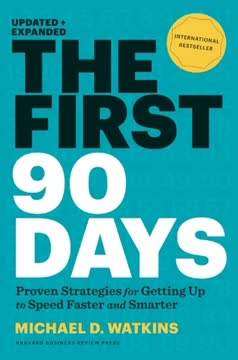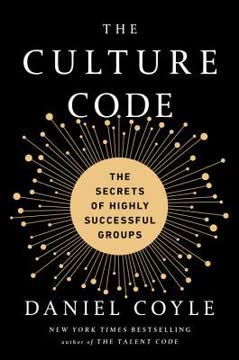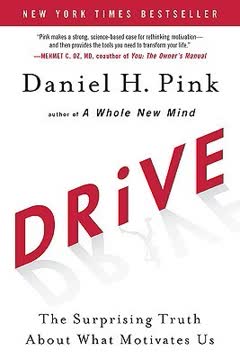重点摘要
1. 掌握提问的艺术,成为更有效的领导者
你需要一种方法来管理跳入解决问题的诱惑。
教练习惯。 这本书介绍了一种以提问为中心的新领导方法,而不是提供立即的解决方案。通过从提供建议转向好奇心驱动的询问,领导者可以释放团队的潜力,促进更大的自主性和成长。
七个关键问题。 这种方法的核心由七个精心设计的问题组成:
- 你在想什么?(启动问题)
- 还有呢?(AWE问题)
- 对你来说,这里的真正挑战是什么?(聚焦问题)
- 你想要什么?(基础问题)
- 我怎么帮你?(懒惰问题)
- 如果你对这个说是,你对什么说不?(战略问题)
- 对你来说,最有用的是什么?(学习问题)
通过掌握这些问题,领导者可以创造更有意义的对话,帮助团队成员找到自己的解决方案,并最终在他们的角色中变得更有效。
2. 使用“启动问题”来启动有意义的对话
“你在想什么?”是一个说,让我们谈谈最重要的事情的问题。
开放但有重点。 启动问题“你在想什么?”是一个强有力的对话启动器。它足够开放,让对方提出对他们最重要的事情,但又足够有重点,避免无目的的小谈话。
3P模型。 为了进一步聚焦对话,可以使用3P模型:
- 项目:情况的内容
- 人员:关系和互动
- 模式:行为和工作方式
通过使用这个问题和模型,领导者可以迅速进入有意义的讨论,解决团队成员面临的最紧迫问题。
3. 使用“AWE问题”生成更多选项和见解
“还有呢?”——AWE问题——具有神奇的属性。
释放潜力。 AWE问题“还有呢?”是一个简单但强大的工具,可以生成更多的想法和见解。通过多次提出这个问题,领导者可以帮助团队成员发现他们最初可能没有考虑到的选项。
AWE问题的好处:
- 生成更多选项,导致更好的决策
- 通过鼓励好奇心来驯服领导者的“建议怪物”
- 为领导者处理信息争取时间
- 为更深层次的思考和反思创造空间
在对话中至少提出三次这个问题,以充分探讨手头的话题。
4. 使用“聚焦问题”关注真正的挑战
关注真正的问题,而不是第一个问题。
深入挖掘。 聚焦问题“对你来说,这里的真正挑战是什么?”帮助领导者和团队成员识别手头的核心问题。通常,首先提出的问题并不是需要解决的真正挑战。
解决常见陷阱:
- 挑战的增多:一次提出太多问题
- 教练幽灵:讨论第三方而不是实际问题
- 抽象和概括:模糊的高层次讨论
通过使用聚焦问题,领导者可以穿透这些模糊的情况,专注于真正的挑战,从而更有效地解决问题和做出决策。
5. 使用“基础问题”揭示真实的愿望
对自己的自由负责是出了名的难。
成人对成人的对话。 基础问题“你想要什么?”是工作场所成熟、富有成效的关系的核心。它鼓励人们对自己的需求和愿望负责。
回答的挑战:
- 人们往往不知道自己想要什么
- 很难要求我们想要的东西
- 清晰地传达愿望可能具有挑战性
- 听到“不”的答案可能会不舒服
通过定期提出这个问题,领导者可以培养一种清晰、直接和相互尊重的文化,从而更有效地合作和解决问题。
6. 使用“懒惰问题”避免过度承诺
我怎么帮你?
澄清请求。 懒惰问题“我怎么帮你?”有两个重要目的。首先,它迫使对方提出明确、具体的请求。其次,它防止领导者在没有完全了解情况的情况下跳入行动。
“懒惰”的好处:
- 鼓励清晰的沟通
- 防止不必要的工作或误导的帮助
- 允许领导者评估他们是否可以或应该满足请求
- 赋予团队成员思考自己的需求
通过采用这种“懒惰”的方法,领导者可以避免过度承诺,确保他们的努力真正有帮助并符合团队的需求。
7. 使用“战略问题”做出战略决策
一个“是”没有“否”来给它边界和形式是没有意义的。
深思熟虑的承诺。 战略问题“如果你对这个说是,你对什么说不?”帮助领导者和团队成员做出更有意图的决策。它鼓励考虑任何承诺中涉及的权衡。
需要考虑的“否”类型:
- 省略的否:说是自动消除的选项是什么?
- 委托的否:为了使是成为可能,必须停止或改变什么?
通过定期提出这个问题,领导者可以帮助他们的团队有效地优先排序,避免过度承诺,并确保他们的努力与战略目标一致。
8. 使用“学习问题”嵌入学习
关键是打断遗忘的过程。
双环学习。 学习问题“对你来说,最有用的是什么?”有助于在对话或会议结束时创造一个反思和见解的时刻。这个问题鼓励“双环学习”,人们不仅解决眼前的问题,还在过程中创造一个学习时刻。
学习问题的好处:
- 假设对话是有用的,积极地框定它
- 鼓励识别关键要点
- 使学习变得个人化和主观化
- 为领导者提供反馈
- 强化互动的价值
通过一致地使用这个问题,领导者可以帮助团队成员从每次互动中提取最大价值,并不断提高他们的技能和知识。
9. 建立新习惯以转变你的领导方法
如果你以抽象和稍微模糊的方式定义你的新习惯,你将无法获得牵引力。
新习惯公式。 为了有效地改变行为并实施教练习惯,领导者应使用以下公式:
- 识别触发:当这种情况发生时...
- 识别旧习惯:而不是...
- 定义新行为:我将...
成功习惯形成的关键:
- 明确触发和新行为
- 保持新习惯简短(少于60秒)
- 通过重复和正念深度练习
- 计划挫折并如何重新上轨
通过有意识地围绕这些强有力的问题建立新习惯,领导者可以转变他们的管理和教练方法。
10. 拥抱参与的神经科学以促进更好的关系
每秒五次,在无意识层面上,你的大脑在扫描周围的环境并问自己:这里安全吗?还是危险的?
TERA模型。 理解参与的神经科学可以帮助领导者创造一个促进更好关系和生产力的环境。TERA模型概述了四个关键的参与驱动因素:
- 部落:你是和我在一起还是反对我?
- 期望:我知道会发生什么吗?
- 排名:我的相对重要性是什么?
- 自主性:我有选择吗?
在领导中应用TERA:
- 提问以增加部落感和自主性
- 尽可能提供明确的期望
- 通过积极倾听尊重和提升他人的地位
- 提供选择并鼓励独立解决问题
通过在互动中考虑这些神经驱动因素,领导者可以为他们的团队创造一个更具参与性、生产性和积极的工作环境。
最后更新日期:
FAQ
What's "The Coaching Habit" about?
- Purpose of the Book: "The Coaching Habit" by Michael Bungay Stanier is about transforming managers and leaders into more coach-like figures by encouraging them to stay curious longer and rush to action and advice-giving more slowly.
- Core Concept: The book introduces a simple yet challenging habit: asking more questions and giving less advice to foster better leadership and management.
- Practical Approach: It provides a fast and practical read, offering seven essential questions that can be used to improve coaching skills in everyday interactions.
- Not Just for Coaches: The book is designed for anyone in a leadership role, not just professional coaches, aiming to enhance their ability to support and develop their teams effectively.
Why should I read "The Coaching Habit"?
- Improve Leadership Skills: The book offers practical tools to become a more effective leader by adopting a coaching mindset.
- Enhance Team Performance: By using the seven questions, leaders can help their teams become more self-sufficient and focused on meaningful work.
- Reduce Overwhelm: It provides strategies to manage workload better and avoid becoming a bottleneck in the organization.
- Build Better Relationships: The book emphasizes the importance of adult-to-adult conversations, helping leaders build more authentic and productive relationships with their teams.
What are the key takeaways of "The Coaching Habit"?
- Seven Essential Questions: The book revolves around seven questions that help leaders coach more effectively by focusing on what truly matters.
- Habit Building: It emphasizes the importance of building a coaching habit through understanding triggers, practicing deeply, and planning for setbacks.
- Focus on Development: The book distinguishes between coaching for performance and coaching for development, encouraging leaders to focus on the latter for long-term growth.
- Engagement and Impact: By asking the right questions, leaders can increase engagement, reduce dependency, and have a greater impact on their teams.
What are the seven essential questions in "The Coaching Habit"?
- The Kickstart Question: "What's on your mind?" to open up meaningful conversations.
- The AWE Question: "And what else?" to explore more options and insights.
- The Focus Question: "What's the real challenge here for you?" to identify the core issue.
- The Foundation Question: "What do you want?" to clarify needs and desires.
- The Lazy Question: "How can I help?" to offer support without taking over.
- The Strategic Question: "If you're saying Yes to this, what are you saying No to?" to prioritize effectively.
- The Learning Question: "What was most useful for you?" to reinforce learning and reflection.
How does "The Coaching Habit" suggest building a coaching habit?
- Identify Triggers: Recognize the moments that prompt old habits and use them to initiate new behaviors.
- Practice Deeply: Focus on small, specific actions that can be repeated and refined over time.
- Plan for Setbacks: Accept that mistakes will happen and have a plan to get back on track.
- Use the New Habit Formula: Combine triggers, old habits, and new behaviors to create lasting change.
What is the difference between coaching for performance and coaching for development in "The Coaching Habit"?
- Coaching for Performance: Focuses on addressing and fixing specific problems or challenges, often short-term and task-oriented.
- Coaching for Development: Shifts the focus to the person dealing with the issue, aiming for long-term growth and learning.
- More Powerful Conversations: Development coaching is more impactful as it encourages self-awareness and personal growth.
- Application of the 3P Model: Helps identify whether the focus should be on projects, people, or patterns to facilitate development.
How does "The Coaching Habit" address the issue of overdependence in teams?
- Encourages Self-Sufficiency: By asking questions instead of giving answers, leaders help team members find their own solutions.
- Reduces Bottlenecks: Leaders avoid becoming the sole problem-solvers, allowing the team to function more independently.
- Increases Autonomy: Team members gain a sense of mastery and control over their work, leading to higher motivation.
- Breaks Vicious Circles: The book identifies and provides strategies to break cycles of overdependence, overwhelm, and disconnection.
What role does neuroscience play in "The Coaching Habit"?
- Risk and Reward Response: The book explains how the brain constantly assesses situations as safe or dangerous, influencing engagement.
- TERA Quotient: Focuses on increasing Tribe, Expectation, Rank, and Autonomy to create a rewarding environment.
- Impact on Engagement: By asking questions, leaders can create a sense of safety and engagement, enhancing team performance.
- Learning and Memory: The book uses neuroscience to explain how asking questions can improve memory retention and learning.
What are some of the best quotes from "The Coaching Habit" and what do they mean?
- "Tell less and ask more." This quote encapsulates the book's core message of shifting from giving advice to asking questions to empower others.
- "We live in the world our questions create." It highlights the transformative power of questions in shaping our understanding and interactions.
- "What people think of as the moment of discovery is really the discovery of the question." This emphasizes the importance of asking the right questions to unlock insights and solutions.
- "Nothing is stronger than habit." It underscores the book's focus on building new habits to create lasting change in leadership behavior.
How does "The Coaching Habit" suggest handling the Advice Monster?
- Recognize the Urge: Be aware of the tendency to jump in with advice and solutions, often prematurely.
- Use the AWE Question: "And what else?" helps manage the impulse to give advice by encouraging further exploration.
- Stay Curious: Focus on asking questions and listening to the answers to keep the conversation open and productive.
- Practice Restraint: Develop the habit of holding back advice until it's truly needed, allowing others to find their own solutions.
How can "The Coaching Habit" help with strategic decision-making?
- The Strategic Question: "If you're saying Yes to this, what are you saying No to?" helps prioritize and focus on what truly matters.
- Clarifies Commitments: Encourages clear and committed Yes decisions, supported by necessary No actions.
- Avoids Overwhelm: Helps leaders and teams manage workload by making conscious choices about priorities.
- Aligns with Goals: Ensures that decisions are aligned with strategic objectives and long-term goals.
What additional resources does "The Coaching Habit" offer for further learning?
- My One Best Question Series: Features videos from business leaders and thought leaders sharing their best questions.
- Top-Shelf Management Books: A curated list of recommended books for further reading on self-management, organizational change, and strategy.
- Box of Crayons Lab: Offers insights and research sources for deeper understanding of the book's concepts.
- Online Tools and Videos: Provides access to videos and tools to help embed the learning and apply the book's principles in real life.
评论
《教练习惯》获得了褒贬不一的评价,许多人称赞其通过七个关键问题进行教练的实用方法。读者们欣赏其简明的格式和可操作的建议,认为这对提升领导力和沟通技巧很有帮助。一些人批评这本书内容重复或缺乏深度。许多读者重视书中强调提问而非给出建议的做法。书中的配套视频和对其他作品的引用普遍受到好评。总体而言,这本书被认为是那些希望培养教练思维的人的有用资源。
Similar Books


















